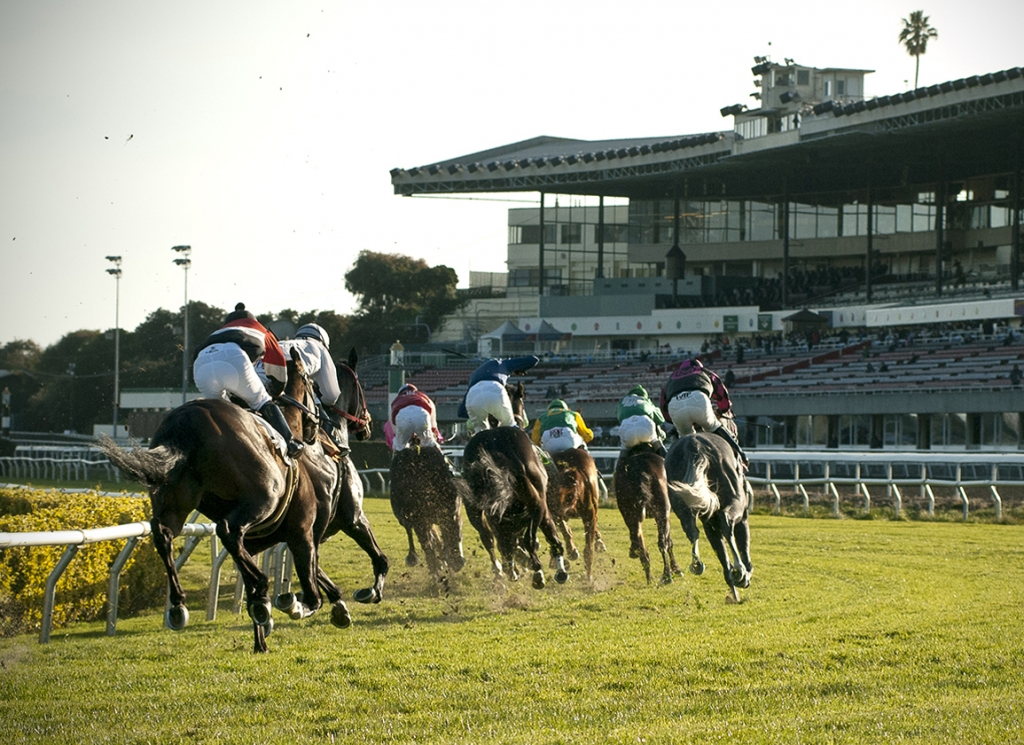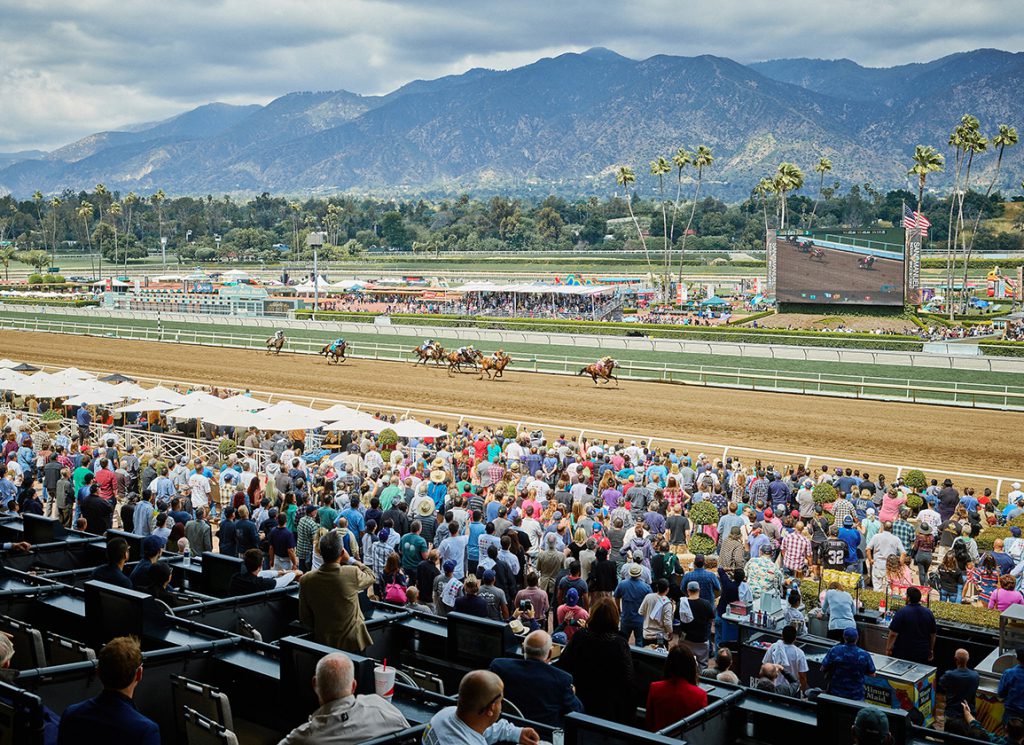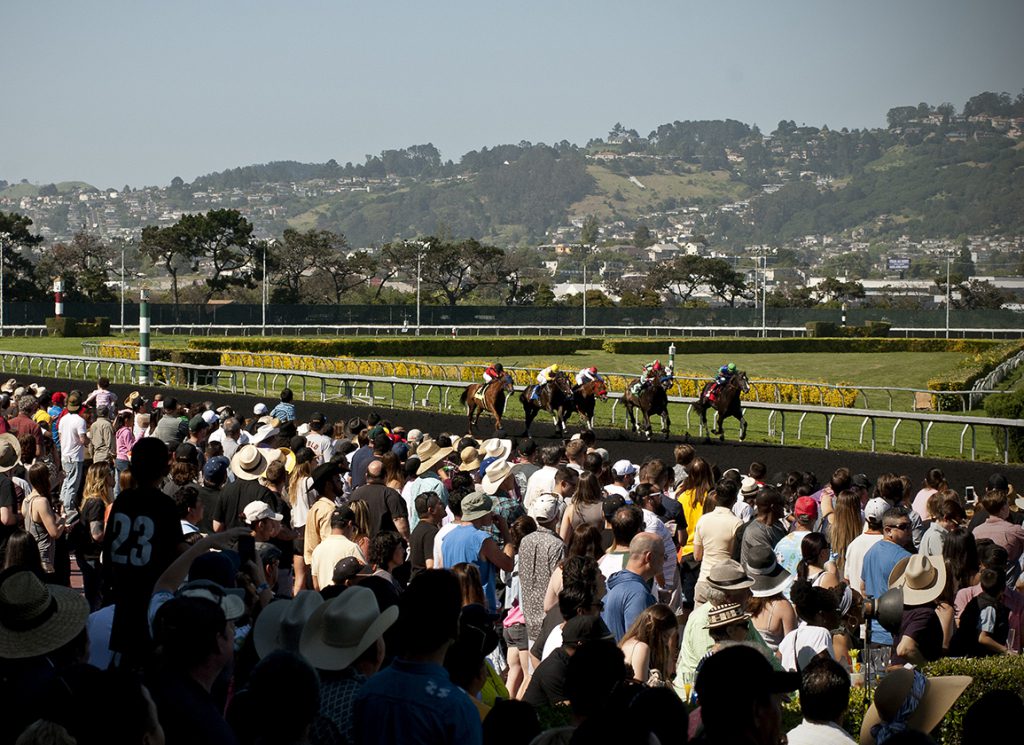One day on, the fallout from The Stronach Group's (TSG) announcement that it is closing Golden Gate Fields at the end of the year continues to reverberate around the state's beleaguered platoon of trainers, owners, breeders and other stakeholders.
“It's like you're Jimmy Stewart in It's a Wonderful Life, and you're losing your job right before Christmas,” said trainer Tim McCanna Monday, while on the road to Del Mar for the track's summer meet. “It just really leaves things up in the air.”
The reason for the closure of Golden Gate, according to TSG's Sunday announcement, was to focus its racing and training venues at Santa Anita Park and San Luis Rey Downs, consolidating the horse population in Southern California with the goal of increasing field sizes and adding another day of racing to the weekly racing calendar at Santa Anita.
McCanna, who maintains a stable of roughly 36 horses at Golden Gate, said that about half of his string are classy enough to fit the Southern California circuit. But at the moment, McCanna is unsure where the rest of his string might head, he said.
As such, McCanna said that he might end up leaving California entirely to race elsewhere. “It's possible,” he replied.
“I don't want to,” he added. “My home's up in Washington. It's a great commute for me back to my ranch up there, and to my owners up there. I still run at Emerald Downs. It was just a good fit, Northern California.”
Given the political winds that have pummeled California racing, and the spotlight Golden Gate has been under by animal rights groups in recent years, there's a palpable sense of inevitability about the closure among many industry stakeholders.
More shocking has been the abrupt nature of the announcement, poorly timed to coincide with the Northern California yearling and horses of racing age sale Aug.15 at Alameda County Fairgrounds.
“If I were those guys, I wouldn't even call the van to pick the horses up,” said Tom Bachman, a long-time owner-breeder in the state.
The decision to close Golden Gate, Bachman added, will likely hit the state's biggest breeders the hardest–a grim prognosis with profound implications for Santa Anita.
During Santa Anita's recently concluded six-month meet, Cal-breds made up about 37% of all individual starts, according to DRF chart data, and Cal-bred races constituted more than 20% of the overall races.
While Cal-breds make up a significant portion of Santa Anita's inventory, however, their influence is waning, according to DRF chart data. The average Cal-bred race field size at Santa Anita's recently concluded meet was 7.36. In 2018, it was 9.01. Ten years ago, it was 9.70.
“I don't know what's going to happen to Barton Thoroughbreds, and the Terry Lovingiers and Tommy Town–those people who breed a large number of horses–I just don't know where those horses are going to find a home,” Bachman said, before estimating that only between 10-15% of the horses at Golden Gate would suit the SoCal circuit.
“The Stronach Group have made a really poor decision trying to prop up Santa Anita with the horses from Golden Gate,” Bachman added. “There's just not enough horses at Golden Gate to make the difference down there.”
Bill Nader, president and CEO of the Thoroughbred Owners of California (TOC), voiced frustration at the dearth of specific details currently on offer.
“It's all happened so fast,” said Nader. “Whether anybody thought this day would come or not, to that end we're surprised by the news, but we're not shocked by the news.
“By the same token, we do not have the complete story yet to really have any kind of meaningful discussion that can result in a recommendation as to what the best avenue is to take California racing forward,” he said. “There's so much missing detail at the moment, it's hard to give you a complete answer.”
The TDN requested an interview Monday with a TSG representative and submitted a series of questions.
Among the questions raised were those about future land use at the facility, and about specific reasons for the planned closure. Earlier this month, for example, the TDN reported that Berkeley City Council had issued a proposed ordinance that, if passed into law, would make it illegal to keep a horse stabled for more than 10 hours a day at Golden Gate, and requires that every horse has access to a minimum of one-half acre pasture turnout.
The TDN also asked about the organization's short and long-term future for Santa Anita. This included whether it planned to invest in renovating the track's long rundown living quarters for the backstretch staff–what many would see as a gesture of the organization's firm commitment to horse racing in the state.

Golden Gate Fields | Shane Micheli/Vassar Photography
TSG declined to answer the questions. “For now, the [Sunday] statement is going to be our comment around the story. We look forward to being in touch in the future about our plans,” wrote Stefan Friedman, a TSG spokesperson.
But amid the rubble of Sunday's announcement, the California Authority of Racing Fairs (CARF) has emerged swiftly with a possible alternative vision of racing in Northern California.
CARF executive director, Larry Swartzlander, shared with the TDN Monday a one-page document outlining in bullet-point CARF's position on the 2024 racing program.
Among the points raised, CARF proposes:
-That TSG reassess Golden Gate's closure date to run through the end of next June. This would give stakeholders more time to realign the racing calendar.
-That Cal Expo in Sacramento becomes the “base of operations” for year-round racing in Northern California.
-That CARF forms a new racing association called “Capitol Racing.”
-Finding revenue sources to support “capitol improvements” at Capitol Racing tracks, including a new turf track at Cal Expo.
-A new racing calendar with reduced dates with the intent to improve field size, return racing to four days a week, and give the Cal Expo turf course time to recover, among other reasons.
-Moving summer racing at Cal Expo to the evening.
According to Swartzlander, a new turf course at Cal Expo would take approximately six months to build and cost roughly $6 million.
There's currently no funding for the proposed track, though Swartzlander said there are a “variety of different funding sources” he was looking at.
“This was a unilateral decision,” said Swartzlander, about Sunday's announcement by TSG. “And now, this all needs to be reassessed with all the stakeholders of California.”
The next California Horse Racing Board (CHRB) race-dates committee meeting is on Aug. 16.
When approached about CARF's proposals Monday morning, Alan Balch, executive director of the California Thoroughbred Trainers (CTT), declined to comment, other than to say that “we don't know what the CARF plan is, and we will evaluate what we see when we see it.”
Nader was similarly equivocal. “We can look at that as an option, and we'll have a conversation with them later this week,” said Nader.
“But again, we've got to put that down alongside whatever it is this plan is going to look like–we'll call it the 1/ST Racing, Santa Anita and San Luis Rey plan. Until we have those side-by-side, I think it's impossible to really come to any meaningful decision,” he said, adding that the TOC board was planning to meet via telephone late Monday afternoon.
“I expect emotions are going to run high,” he said. “It'll probably be a spirited conversation. But we won't have a unified position because there are a lot of pieces to this puzzle that are still unclear.”
Given the general quality of racehorse participating at Golden Gate, a potential obstacle to broad participation among that group at Santa Anita would be the minimum $10,000 claiming threshold at the track–a condition of licensure imposed by the CHRB in 2019.
According to agency spokesperson Mike Marten, however, the CHRB looked at Santa Anita's most recent license application–spanning their recently concluded winter-spring 2022-2023 meet–and that condition “was not discussed or included.”
Another wrinkle in this whole fragmented saga is TSG's potential purchase of the Arizona Downs racetrack, as reported by the TDN in August of last year.
Reached Monday morning, Tom Auther, an Arizona Downs owner and partner, said he and his partners have continued to speak with TSG representatives “every once in a while,” but that other potential buyers were circling the facility.
“I don't know if Golden Gate going away helps, hurts, or makes any difference at all,” he said, when asked if the announcement changes the color of these ongoing negotiations. “We've walked a couple other entities through it. But I don't want to make things sound imminent because it isn't.”

The post With Golden Gate Closing, Can Nor-Cal Fashion Alternative Circuit? appeared first on TDN | Thoroughbred Daily News | Horse Racing News, Results and Video | Thoroughbred Breeding and Auctions.
Source of original post



